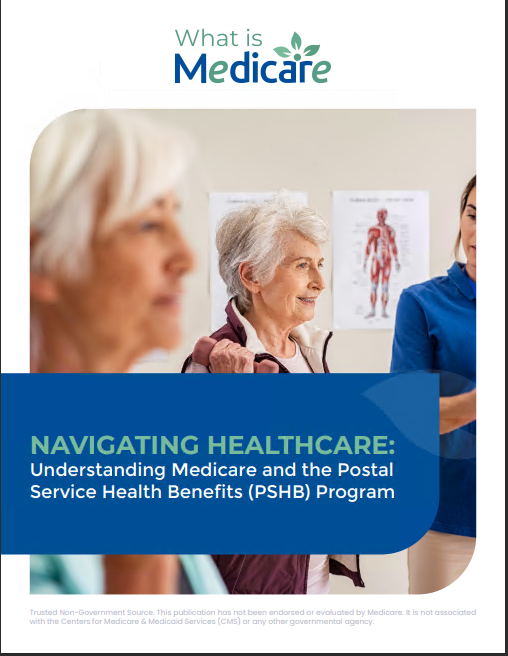Key Takeaways:
-
Missing your Medicare enrollment period can lead to lifelong penalties and gaps in coverage, so it’s crucial to sign up at the right time.
-
You have multiple enrollment windows, including Initial, Special, and General Enrollment Periods, each with its own rules and deadlines.
Understanding Medicare Enrollment: Avoid Penalties and Coverage Gaps
Medicare enrollment isn’t automatic for everyone, and if you miss your window, you could end up paying penalties or waiting months for coverage to start. Knowing when and how to enroll ensures you get the healthcare you need without unnecessary costs or delays.
Who Needs to Sign Up for Medicare?
If you’re turning 65, you may assume Medicare will automatically cover you. That’s not always the case. Here’s who needs to enroll:
-
If you’re already receiving Social Security benefits before turning 65, you’ll be enrolled in Medicare Parts A and B automatically.
-
If you aren’t receiving Social Security benefits yet, you must actively sign up.
-
If you have employer coverage, you might be able to delay Medicare, but you’ll need to understand your employer size rules to avoid penalties.
When Can You Enroll in Medicare?
1. Initial Enrollment Period (IEP)
This is your first chance to enroll in Medicare. It lasts seven months—starting three months before your 65th birthday month, lasting through your birthday month, and ending three months after.
-
Signing up before your birthday month means your coverage starts the first day of your birthday month.
-
Signing up during your birthday month or later means your coverage is delayed.
If you miss this period, you could face permanent late penalties unless you qualify for a Special Enrollment Period.
2. Special Enrollment Period (SEP)
You may qualify for an SEP if you or your spouse are still working and covered by a group health plan from an employer with 20 or more employees. Once your employer coverage ends, you have eight months to enroll in Medicare without penalties.
The Consequences of Late Enrollment
Missing your IEP or SEP can lead to two major issues:
1. Late Enrollment Penalties
-
Medicare Part A: If you don’t qualify for premium-free Part A and fail to enroll when first eligible, your premium may increase by 10% for twice the number of years you delayed enrollment.
-
Medicare Part B: A 10% penalty per 12-month period you were eligible but didn’t enroll is added to your monthly premium permanently.
-
Medicare Part D: A late enrollment penalty applies if you go 63 consecutive days or more without creditable prescription drug coverage.
2. Coverage Gaps
If you miss your IEP and don’t qualify for an SEP, you’ll have to wait for the General Enrollment Period (GEP), which runs from January 1 to March 31 each year. Coverage won’t begin until July 1, leaving you without health insurance for months.
How to Enroll in Medicare
Step 1: Gather Your Information
Before signing up, have these documents ready:
-
Social Security number
-
Proof of U.S. citizenship or lawful residency
-
Employer coverage details (if applicable)
Step 2: Choose Your Enrollment Method
You can sign up in several ways:
-
Online through the Social Security Administration (SSA) website
-
By phone at the SSA helpline
-
In person at a local Social Security office
Step 3: Decide on Your Coverage
Medicare is split into different parts, and you’ll need to decide what fits your needs:
-
Part A (Hospital Insurance): Covers hospital stays, skilled nursing care, and some home health services.
-
Part B (Medical Insurance): Covers doctor visits, preventive care, outpatient services, and medical equipment.
-
Part D (Prescription Drug Coverage): Helps pay for medications.
Avoiding Common Medicare Enrollment Mistakes
1. Assuming You’re Automatically Enrolled
Many people think Medicare enrollment happens automatically at 65, but if you’re not receiving Social Security benefits yet, you must actively enroll.
2. Delaying Enrollment Without Employer Coverage
Some delay Medicare thinking they can sign up anytime without penalty. If you don’t have qualifying employer coverage, you’ll face lifelong late fees.
3. Not Understanding Employer Size Rules
-
If your employer has 20 or more employees, you can delay Medicare without penalty.
-
If your employer has fewer than 20 employees, Medicare should be your primary insurance at 65, and delaying could lead to penalties and coverage gaps.
What If You Missed Your Enrollment Window?
If you missed your IEP and don’t qualify for an SEP, your only option is the General Enrollment Period (GEP), which runs from January 1 to March 31. However, your coverage won’t start until July 1, leaving you uninsured for months.
When Should You Sign Up for Medicare Part D?
Prescription drug coverage isn’t included in Original Medicare, so you’ll need to sign up separately if you want it. Your enrollment period aligns with your IEP. If you don’t enroll during this time, you’ll face a penalty of 1% per month for every month you delay enrollment without creditable coverage.
Special Circumstances: What If You’re Still Working at 65?
If you or your spouse are still working, your next steps depend on the size of your employer:
-
20+ Employees: You can delay Medicare without penalties as long as your employer provides creditable coverage.
-
Fewer than 20 Employees: Medicare becomes your primary insurance at 65, and you must sign up to avoid penalties.
If you decide to delay, make sure your employer’s plan meets Medicare’s creditable coverage requirements to avoid penalties when you eventually enroll.
Making the Right Choice for Your Healthcare Needs
Enrolling in Medicare at the right time is essential to avoid unnecessary costs and coverage gaps. Know your deadlines, understand your options, and take action early to ensure a smooth transition to Medicare.
Need help? A professional listed on this website can guide you through the enrollment process, explain your options, and help you avoid costly mistakes.










